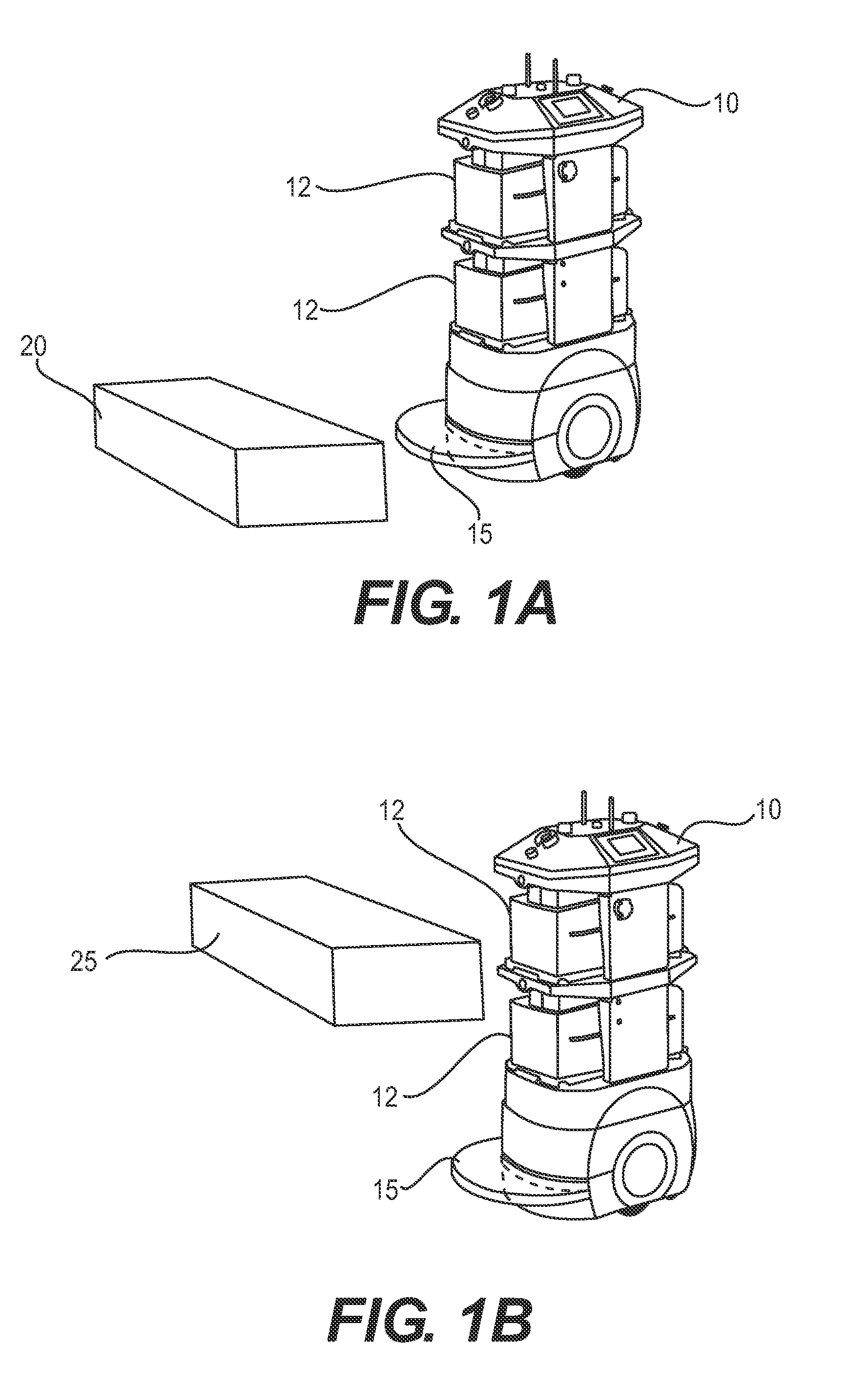Positive and negative obstacle avoidance system and method for a mobile robot
a technology of positive and negative obstacles and avoidance systems, applied in the field of mobile robots, can solve the problems of not working well for detecting positive, mobile robots that use horizontally oriented lasers for detecting obstacles also have problems detecting and avoiding unexpected, etc., to improve the ability of mobile robots to detect and reduce the number of false positives
- Summary
- Abstract
- Description
- Claims
- Application Information
AI Technical Summary
Benefits of technology
Problems solved by technology
Method used
Image
Examples
Embodiment Construction
[0030]FIGS. 1A and 1B together illustrate, by way of non-limiting example, one of the disadvantages of conventional laser-based obstacle avoidance systems for mobile robots. As shown in FIGS. 1A and 1B, mobile robot 10 is equipped with a horizontally-oriented scanning laser (not shown), which emits laser light rays 15 that fan out in front of the robot in a substantially horizontal plane that is roughly parallel to the floor or other surface upon which the mobile robot travels. When mobile robot 10 approaches an obstacle that is resting on the floor of the physical environment, or very near the floor, such as obstacle 20 in FIG. 1A, the laser light rays 15 strike the obstacle 20 and are reflected back to the mobile robot 10. Sensors in the laser detect and process the reflections, thereby informing the mobile robot 10 that there is an obstacle 20 in its path that needs to be avoided. Thus, the obstacle avoidance and locomotion controllers on board mobile robot 10, if any, cause mobi...
PUM
 Login to View More
Login to View More Abstract
Description
Claims
Application Information
 Login to View More
Login to View More - R&D
- Intellectual Property
- Life Sciences
- Materials
- Tech Scout
- Unparalleled Data Quality
- Higher Quality Content
- 60% Fewer Hallucinations
Browse by: Latest US Patents, China's latest patents, Technical Efficacy Thesaurus, Application Domain, Technology Topic, Popular Technical Reports.
© 2025 PatSnap. All rights reserved.Legal|Privacy policy|Modern Slavery Act Transparency Statement|Sitemap|About US| Contact US: help@patsnap.com



